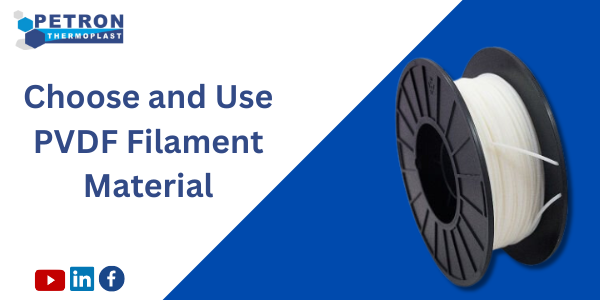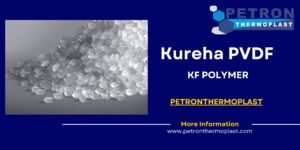Polyvinylidene fluoride (PVDF) filament is a remarkable material with a wide array of applications in various industries, including aerospace, automotive, electronics, and more. Its exceptional properties make it a popular choice for 3D printing enthusiasts and professionals alike. In this comprehensive guide, we’ll delve into the intricacies of PVDF filament, exploring how to choose the right type for your specific needs and how to effectively utilize it in your projects.
Understanding PVDF Filament

What is PVDF?
PVDF, or polyvinylidene fluoride, is a semi-crystalline thermoplastic polymer known for its excellent chemical resistance, high thermal stability, and exceptional mechanical properties. It exhibits outstanding resistance to solvents, acids, bases, and UV radiation, making it suitable for demanding environments.
Properties of PVDF Filament
PVDF filament boasts a unique combination of properties that make it highly desirable for various applications:
- Chemical Resistance: PVDF is highly resistant to a wide range of chemicals, including acids, bases, and organic solvents.
- Thermal Stability: With a high melting point and excellent thermal stability, PVDF can withstand elevated temperatures without deforming.
- Mechanical Strength: PVDF offers impressive mechanical strength and stiffness, making it suitable for structural components.
- UV Resistance: PVDF exhibits excellent resistance to ultraviolet (UV) radiation, ensuring long-term stability in outdoor applications.
- Low Flammability: PVDF is inherently flame retardant, adding to its suitability for safety-critical applications.
Choosing the Right PVDF Filament
When selecting PVDF filament for your 3D printing projects, several factors should be considered to ensure optimal results:
1. Filament Diameter
PVDF filament is available in various diameters, typically ranging from 1.75mm to 3.00mm. Ensure that the filament diameter is compatible with your 3D printer’s specifications to prevent printing issues and achieve accurate results.
2. Filament Color
PVDF filament is commonly available in natural or white color. While natural filament offers transparency and allows for dyeing or coloring, white filament provides a neutral base for painting or post-processing. Choose the color that best suits your aesthetic preferences or project requirements.
3. Filament Grade
PVDF filament is available in different grades, each tailored to specific applications and performance requirements. Common grades include standard PVDF, PVDF with enhanced chemical resistance, and PVDF with added fillers for improved mechanical properties. Select the appropriate grade based on the intended use of your printed parts.
4. Filament Quality
Ensure that you purchase PVDF filament from reputable suppliers known for their quality and consistency. High-quality filament undergoes stringent manufacturing processes to maintain precise dimensions, uniform composition, and minimal impurities, resulting in reliable printing performance and superior end products.
Tips for Printing with PVDF Filament
To achieve optimal results when printing with PVDF filament, follow these tips and best practices:
1. Proper Bed Adhesion
Ensure proper bed adhesion by thoroughly cleaning the print bed and applying an appropriate adhesive, such as a heated build platform or adhesive spray. This helps prevent warping and ensures the successful adhesion of the first layer.
2. Enclosure or Heated Chamber
Consider printing PVDF filament in an enclosure or heated chamber, especially for larger prints or those with intricate geometries. Maintaining a stable printing environment helps minimize warping, improve layer adhesion, and enhance overall print quality.
3. Optimal Printing Parameters
Fine-tune your printer settings to optimize printing parameters such as nozzle temperature, bed temperature, layer height, and print speed. Refer to the manufacturer’s recommendations and conduct test prints to determine the ideal settings for your specific PVDF filament.
4. Post-Processing Techniques
Experiment with post-processing techniques to enhance the appearance and properties of your printed parts. Options include sanding, polishing, painting, and chemical treatments. Choose the method that best suits your desired finish and functional requirements.
Applications of PVDF Filament
PVDF filament finds widespread applications across various industries due to its exceptional properties and versatility. Some common applications include:
1. Aerospace Components
PVDF’s lightweight nature, high strength-to-weight ratio, and resistance to chemicals and UV radiation make it ideal for aerospace components such as ducting, brackets, and housings.
2. Chemical Processing Equipment
PVDF’s excellent chemical resistance and thermal stability make it well-suited for manufacturing chemical processing equipment such as pipes, valves, pumps, and fittings.
3. Electrical Insulation
PVDF’s electrical insulating properties, combined with its resistance to harsh environments, make it a preferred choice for electrical insulation applications, including wire insulation, cable jackets, and electrical connectors.
4. Medical Devices
PVDF’s biocompatibility, chemical resistance, and sterilizability make it suitable for medical device applications, including surgical instruments, catheters, implantable devices, and diagnostic equipment.
5. Architectural Components
PVDF’s weatherability, UV resistance, and aesthetic appeal make it a popular choice for architectural components such as cladding panels, roofing membranes, and exterior facades.
Conclusion
PVDF filament offers a compelling combination of properties that make it an attractive choice for a wide range of 3D printing applications. By understanding the key considerations in selecting the right filament and implementing best practices for printing and post-processing, you can harness the full potential of PVDF filament to bring your innovative ideas to life. Whether you’re fabricating aerospace components, chemical processing equipment, medical devices, or architectural components, PVDF filament provides the durability, reliability, and performance required for success in demanding environments. Experiment, explore, and unleash your creativity with PVDF filament today!

Frequently Asked Questions (FAQ)
1. What is PVDF filament?
PVDF filament, short for polyvinylidene fluoride filament, is a type of thermoplastic polymer used in 3D printing. It’s known for its exceptional chemical resistance, thermal stability, and mechanical properties.
2. What are the main properties of PVDF filament?
PVDF filament boasts several key properties, including high chemical resistance, excellent thermal stability, impressive mechanical strength, UV resistance, and low flammability. These properties make it suitable for a wide range of applications across various industries.
3. What are the common applications of PVDF filament?
PVDF filament finds applications in aerospace components, chemical processing equipment, electrical insulation, medical devices, architectural components, and more. Its versatility and durability make it a popular choice for demanding environments.
4. How do I choose the right PVDF filament for my project?
When selecting PVDF filament, consider factors such as filament diameter, color, grade, and quality. Ensure that the filament diameter is compatible with your 3D printer, choose the color and grade that suit your project requirements, and opt for high-quality filament from reputable suppliers.
5. What are some tips for printing with PVDF filament?
To achieve optimal results when printing with PVDF filament, ensure proper bed adhesion, consider using an enclosure or heated chamber, fine-tune printing parameters, and experiment with post-processing techniques to enhance the appearance and properties of your printed parts.
You May Also Like :
What Is The Main Advantage Of A PVC Butterfly Valve?
What Are The Benefits Of Using Plastic Welding Rods?
What Types Of Materials Are Used For Plastic Bearing?
Why Are Ball Valve Made Of Stainless Steel
Different Types Of Union Ball Valves And Their Uses




